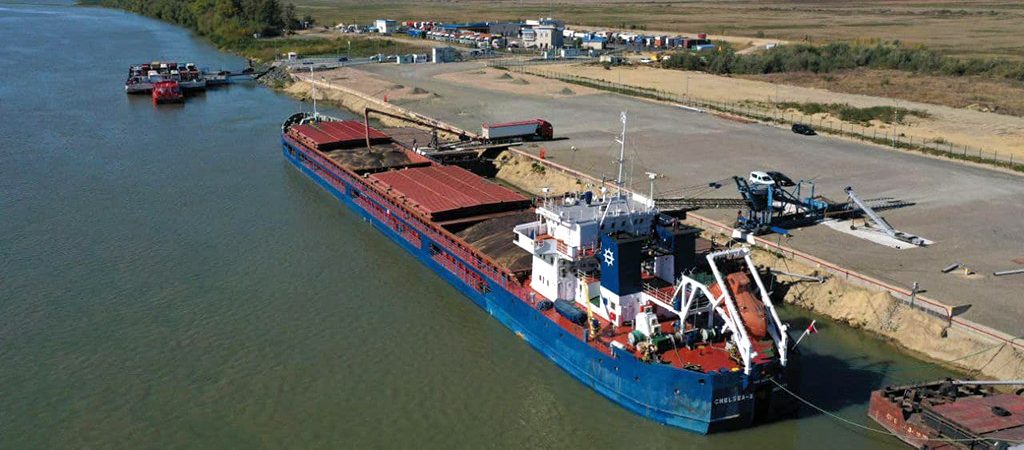
UDP will handle cargo at the Orlivka-Isakcha ferry complex
PJSC "Ukrainian Danube Shipping" (UDP) establishes cooperation with the Orlivka-Isakcha ferry complex on the Danube for cargo transportation. This was reported by acting general director of UDP Dmytro Moskalenko.
Why are we interested in Orlivka? Because this is an additional flow of cargo, and we are looking for new opportunities to increase transportation. Because, unlike many terminals in Reni/Ishmael, the local transshipment is not yet overloaded, which greatly simplifies the life of cargo owners. Because here the river fleet is treated as a priority customer (in many other loading points sea vessels are primarily served). I hope that the cooperation between the new port and the UDP will be long-lasting and successful," Moskalenko wrote on Facebook.
The head of the UDP reminded that Orlivka-Isakcha is an international automobile checkpoint, a direct Ukraine-EU crossing. Almost 90% of the traffic consists of container road transportation to Constanta. From Orlivka/Isacci to the largest Romanian port is only 145 km. But last year, Orlivka-Isakcha also turned into a cargo terminal, a river-sea hub, a new loading and unloading point for ships and barges. The ferry crossing has been operating as a port for several months.
In September last year, a transshipment complex was organized in Orlivka, which is already working successfully. Since then, more than 50,000 tons have been transshipped, both from river and sea vessels, thanks to the fact that the sediment here is greater than in the Rheny port.
In November, the transshipment complex was included in the water area of the Rhenia port. But the owners of Orlivka have a direct contract with Delta-Lotsman branch of SE "Administration of Sea Ports of Ukraine" (AMPU) for starting ships from the mouth of Bystre and a direct contract with AMPU for operation and agency. Currently, an application for the status of a marine terminal has been submitted.
The volume of investments is more than $2 million, and the development of the young port continues. In particular, the construction of large warehouses for 15,000 tons of one-time storage of goods has started.
Interestingly, across the Danube, Romania is building the port of Isaccia, which will house a large universal marine terminal. There are state investments there, and a tender for its concession will be announced in the coming months. Thus, a unique infrastructure object will appear in which two ports of two countries are located opposite each other. This will make it possible, for example, to unload checkpoints, because today many grain trucks are standing in queues at checkpoints," Moskalenko concluded.
In mid-February 2022, the Cabinet of Ministers added the Orlivka ferry complex on the Danube to the list of checkpoints across the state border through which the movement of military goods is allowed.
The ferry crossing across the Danube between the Orlivka and Isakc crossing points officially began operations on August 10, 2020. In the first half of the year, only cargo vehicles could use the ferry, which was due to the restrictions in place in Romania due to the coronavirus epidemic. From February 12, 2021, the Orlivka-Isakcha ferry crossing began serving cars, passenger vehicles and pedestrians.
The construction of the Orlivka-Isakcha ferry crossing started in the fall of 2015. The project included a general purpose road, a warehouse complex, a dam, a mooring structure, a parking and waiting area for motor vehicles, and other facilities. The infrastructure facilities are built on the narrowest part of the Danube: the distance between the Ukrainian and Romanian banks is 900 meters. It is planned that the crossing will be served by four ferries with a draft of 1.5 meters. The daily throughput capacity of the crossing is about 200 units of freight vehicles, 500 units of passenger carsk - 1.5 thousand people.
The opening of the crossing simplified the procedure for crossing the border between Ukraine and Romania, in particular, it eliminated the need to drive through Moldova and detour 200 kilometers.




